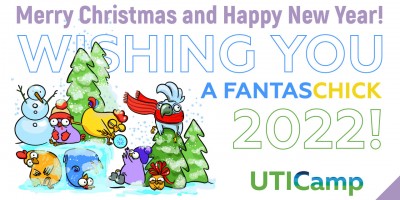Many traditional lifestyles were shattered. Perhaps not so much for freelance translators working from home, but many interpreters were certainly caught off guard. Most of us have survived the lockdown spring, but some could adapt to the new reality quicker and less painfully - and some were hit hard. This can't remain a sad but meaningless experience, because life is not returning back to precovidian times. We don't have a choice but to draw lessons from this experience, to adapt and to use it to boost our freelance careers (not an oxymoron!) and profession in general.
memoQ is a versatile tool intended both for translation and review work. However, many default settings in memoQ are defined with translators, not reviewers in mind. Marek presented various scenarios for reviewing text both translated in memoQ (offline and online projects) and bilingual imports from different software (e.g. Trados Studio) and showed how to work efficiently employing various memoQ features like penalties for users/TMs/metadata, match insertion threshold or status change.
Game localization lies at the interface between IT and literary translation and it requires specific skills from both the PM and the translator. We are going to review all project stages from these two perspectives and go through the challenges game localizers meet. We hope that our presentation may help companies and freelancers decide whether game localization is really what you'd like to do and (if you are bold enough) how to minimize wheel reinventing.
UTICamp is a unique open-air translation industry event.
A space for new ideas, up-to-date knowledge and bright emotions
An atmosphere that encourages partnership, experience exchange, networking, and relaxation
Dozens of prominent speakers, music by the campfire, bird songs and children laughing
UTICamp-2019 was proof of this: 7 days, 65 talks, 3 workshops, Attendees from 19 countries, 6 concerts
And countless smiles. We want even more!
Leonid Glazychev, Vladimir Kukharenko, Tatiana Struk, Michael Yepanov and Stanislav Kaleniuk held a panel discussion in the Business of Translation Track. The main topics of the discussion were company employee motivation, team building and setting common goals, the specifics of operating in the international market, and regional cultural influences.
The number of software solutions and resources is growing daily. Many novice translators ask the following questions: What kind of translation technologies are available? How to start learning the software? How to choose the best tools from amongst so many similar ones?
What can we expect from the future? More importantly, what’s driving the changes? In the internet age, when content matters more than ever, we need to create more content, to translate more content and to deliver more content. How can we manage all these processes? Paul also talked about human optimized approach in the era of automation.
How do you avoid making mistakes due to confusing legal terms if no official sources have been given? What do lawyers expect from us? Which is better: to look up the closest equivalents of English and American terms in our country’s law or to translate descriptively to stress the absence of such equivalents? Should we use terms from the relevant legislation or the terms given in the client’s glossary?
InText has been continuously improving its complaint processing and recording processes for 10 years. We use a unique technology for statistical analysis of causes of complaints and development of preventive actions. In the presentation, we will explain how the complaint record storage system is organised in the internal TMS and how we use Microsoft PowerBI for trend monitoring. We will also speak about regular meetings of our quality committee and describe how we keep track of each complaint life cycle.
Creative texts captivate readers with a graceful blend of content and flair. They work like magic – but there’s art, craft and science behind the playful swirls. And the same approach is needed to brew such messages for a new audience. In this session, we explore how creative texts come to life: the decision-making and language choices that shape the style of copy and content. And: what translators need to know (and use) to re-create the magic.





